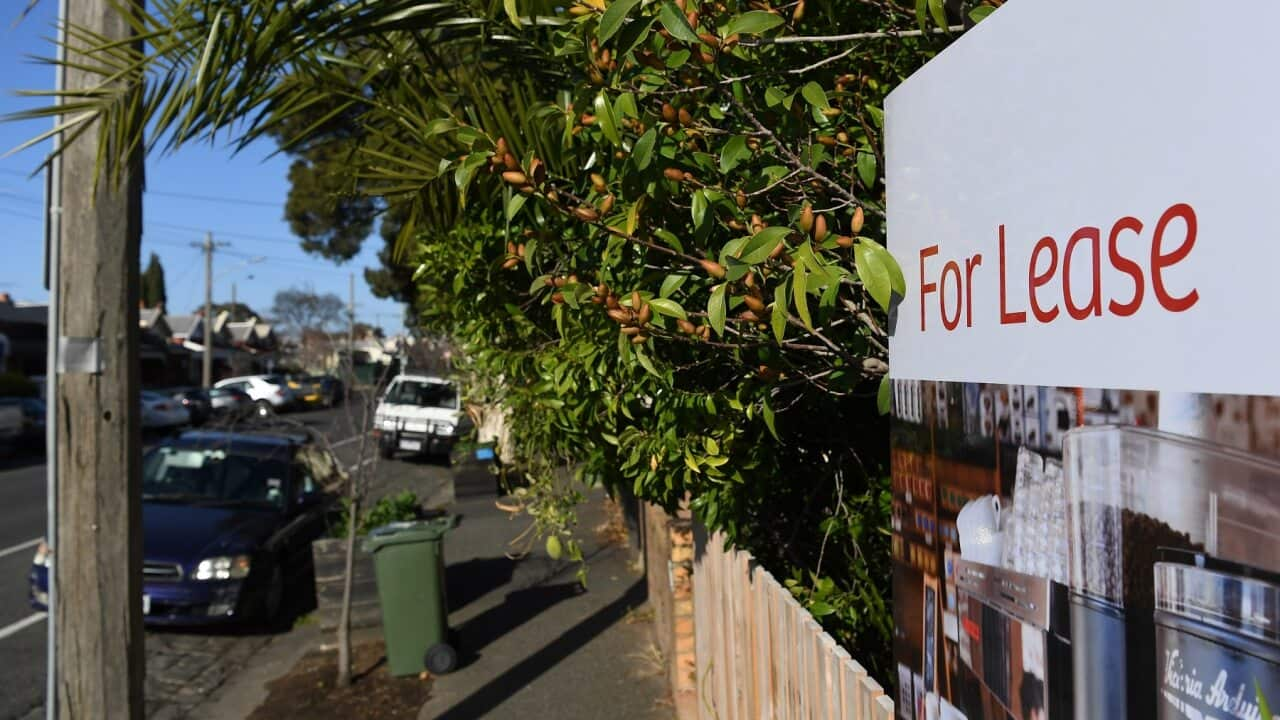Key Points
- The share of properties listed for rent below $400 per week is at the lowest level on record as rental prices surge
- In March 2020, 41.8 per cent of rentals were less than $400 per week. In September 2022, that fell to of 19.3 per cent
With Australia's housing prices stubbornly high and the the number of affordable rentals has hit a record low, according to a new report.
A market insight report from PropTrack found the share of properties listed for rent on realestate.com.au for less than $400 per week fell to a record low of 19.3 per cent of listings in September 2022.
This represents a decline from 41.8 per cent in March 2020.
Experts say they expect the supply of affordable rental listings to keep dropping over coming months due to lower vacancy rates, low levels of first-home buyers purchasing and increasing migration.
Here's what you need to know.
What did the report find?
According to the report, not one capital city market had more than a quarter of listings below $400 per week in September 2022.
In Sydney, one in five rentals were advertised under $400 per week a year ago, but in September 2022 that has fallen to one in 10.

The share of properties listed for rent on realestate.com.au for less than $400 per week fell to a record low 19.3 per cent of listings in September 2022, according to new research by PropTrack. Source: SBS News
In regional areas, the share of rental properties advertised for less than $400 per week fell from 57 per cent to 28 per cent.
The total number of properties available for rent is 31.4 per cent lower since the start of the COVID-19 pandemic.
What is causing rental prices to increase?
PropTrack economist Angus Moore says the record low comes down to low vacancy rates and lack of rental options.
"The main reason that we're seeing rents grow as quickly as we are at the moment is that there just aren't a lot of rentals available," he said.
"Vacancy rates are extremely low, the number of rentals listed on realestate.com.au is well down compared to where it was pre-pandemic, and in capital cities they're own even compared to where they were a year ago."
Catherine Birch, senior economist at ANZ Research, says in addition to the increase in demand, Australia has faced limitations in the amount of new housing it is able to build, partly due to supply chain issues in the construction industry.
"There's a lot of people who may be waiting for their new home to be built ... and if that home were built, they'd be able to move into it now and stop renting, and that would open up a rental property for someone else."
Have rate rises had an impact?
In October, the Reserve Bank of Australia (RBA) lifted the official cash rate by a quarter of a percentage point to 2.6 per cent, marking its highest level since July 2013.
The central bank has now lifted the rate for six consecutive months, and many Australian mortgage holders are now paying hundreds of dollars more in repayments every month than they were this time last year.
With affordability becoming more of a constraint and rate rises reducing people's borrowing capacity, there's even more pressure on the rental market, Ms Birch says.
"If people can't get into the new home market, they're going to continue to be renting."
The pandemic effect
The COVID-19 pandemic has also had a significant impact on Australia's real estate market, and has impacted rental availability in two key ways, Mr Moore says.
"The first is that during the pandemic, we actually saw a lot of investors sell out of their rental properties, which means that today there is just smaller rental stock than would otherwise have been the case," he said.
"But the other is that we've seen a strong increase in rental demand, as renter households got smaller through the pandemic.
"Part of the reason is living in a shared house just became less attractive for many people, and so we saw fewer share houses and more one and two-bedroom units."
During the pandemic, Australia also experienced a spike in migration from cities to regional areas.
Regional migration
In December 2020, the government’s Centre for Population showed capital cities had a net loss of in the quarter to June 2020 - the largest net quarterly move on record and more than double the average observed over the last decade.
This internal migration has resulted in lower vacancy rates and higher prices in Australia's regions, Mr Moore says.
"We saw a lot of people move from capital cities into regional areas, and regional areas just don't have very deep rental markets," he said.
"As a result, we've seen a lot of the available stock kind of snapped up and that's persisted for much of the past two years ... we're seeing rents in some of these areas grow very quickly and vacancy rates close to zero."
What happens next?
When it comes to forecasting, it may be some time before renters experience any relief.
"Rental growth does seem to have slowed recently according to some of the CoreLogic data, but rental prices are still going up and we do expect that to continue as long as vacancy rates remain low.
"In Sydney and Melbourne, we're probably going to see vacancy rates continue to fall and what's going to contribute to that is the recovery of population growth," Ms Birch said.
"We're now getting quite a strong return with net immigration to Australia, and whoever comes to Australia needs somewhere to live."











